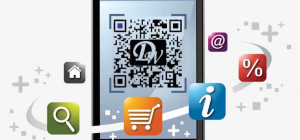 Do you know why do scientists research? Are they insane? Or, do they love to dig any matter meaninglessly? They actually reveal the facts that support the transformation. Without transition from the old books, no innovation can occur. This is what the ulterior motto of any kind of research.
Do you know why do scientists research? Are they insane? Or, do they love to dig any matter meaninglessly? They actually reveal the facts that support the transformation. Without transition from the old books, no innovation can occur. This is what the ulterior motto of any kind of research.
What actually the market research is?
Here, I want to let you attend the research of market that has been the hottest topic for all entrepreneurs. Let’s begin with its scientific definition that is described in entrepreneur.com.
It goes as “The process of gathering, analyzing and interpreting information about a market, a product or service to be offered for sale in that market, and about the past, present and potential customers for the product or service; research into characteristics, spending habits, location, needs of your business’ target market, the industry as a whole, and the particular competitors you face.”
The foregone definition fits in perfectly the frame of business scenario. If consider big data as the treasure of facts, unfolding transformative tricks for any business becomes a walkover. But here the conditions are applied. Science rejects unsystematic ways to spike. However, facts and figures are mandatory but the system to analyze and execute the analytics matters the most.
Process of Market Research
Let’s take a round of the systematic way of conducting market research that science favours.
- Determine the problem: Definition dispels doubts and clarifies what anything means. In the context of market research, defining the business problem initializes its uprooting. For it, the researcher should look into its nature. The nature of any problem determines what exactly the problem and its kind are.
Let’s say, what Google did recently to cope up with Phishing scam might not be possible without research. Although the problem was known to its experts (that was hacking) yet the proper and intense research was conducted to identify its kind (that was phishing). Around 0.1 million Google account holders were hacked. However, its experts defeated the cyber criminals within one hour and deleted their malicious links.
Its web experts and tech engineers capitalized on assumptions. They focused on time management for data extraction of malicious links. Assuming what the spam is, its crew of ITians came in action. And also assuming the tricks to conquer over the hack, they appeared winner. Science needs reasoning and assumptions build roadways to success provided that the facts must be true. In the foretold example, assuming Google Docs as source of hacking was proved correct and the problem was shrunk to big before going to be massive.
- Scrap and collect relevant data: The research would be void if the authentic elements would be absent. Therefore, the outsourcing or data based organizations employ tools of data extraction to collect it from the valid sources.
Basically, the data is classified into three categories for introducing relevancy to build up fruitful assumptions. These are:
- Insightful data: The data that derives existing facts and information of the project is called insightful data. The knowledge is developed on the basis of data entries by evaluating their pros & cons for a makeover of business.
- Observational Data: It’s the data that consists of consumers’ behaviour, for example, demographic observation & ethnology description etc..
- Experimental data: The data composed of experiments is considered as experimental data, for example, the reviews and comments mentioned in online surveys and forums.
- Build assumptions: As told in the first point, assumptions lay a foundation of predictions. If the fundamental blocks, i.e. assumption sources (like surveys, operations’ insight etc.), are inaccurate or fake, the prediction would be far away from the reality. Consequently, the decision taken would fall flat and the further processing would collapse the business.
If we move to prediction patterns, the researcher and analyst must collate to blur the line between:
- Trial and purchase pattern
- Desires and satisfaction
- Productivity and demand
Predictions are formulated to take monstrous decisions that have the promise of transformation. Although the identification of loops that conspired unprofitability is essential yet the predictive strategies pillar the future growth.
- Test assumptions: Do you think prior to typing on the keyboard? For sure, a meaningful sentence or characters would be popping in your mind. In the nutshell, I want to clarify here that deep thinking and assumption underlie any big or small invention.
Likewise, the growth of business seeds from assumptions. But without testing & evaluating their productivity and value, their viability would be impossible.
What must be kept in mind are these points while building up assumption:
- Say a big ‘no’ to the data collected using data scraping methods for testing the viability of strategy. Rather, collect counter data from various reliable and authentic sources so that the true viability would be judged.
- Build the testing scenario in different situations. For instance, various telecom operators launch different data packages to corporate groups and individual users.
- The testing method should have every ordeal to evaluate the decision as reverse. It’s like the trial that occurs in the courtroom. The public prosecutor has to present contra evidence to beat another lawyer. Conduct the testing in a similar way for better results.
- Assumptions are hypothetical which can’t be true. But it unearths several aspects that can prove a daunting challenge if remained unsorted out in future. Therefore, test in multiple ways for proving your decision more proximal to real success.







